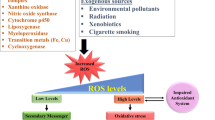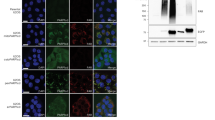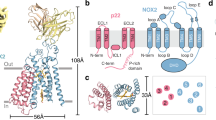Abstract
Background:
Studies conducted in the prepubertal period showed that biomarkers of oxidative stress decreased with increasing age in normocholesterolemic children (NC), and, conversely, they are persistently high in hypercholesterolemic children (HC). Nicotinamide adenine dinucleotide phosphate (NADPH) oxidase is the most important cellular source of reactive oxygen species. No data have been reported concerning the behavior of age-related oxidative stress generated by NOX2, the catalytic subunit of NADPH oxidase, in children.
Methods:
We performed a cross-sectional study comparing oxidized low-density lipoprotein (ox-LDL), as a marker of oxidative stress, and NOX2 activity, as assessed by blood levels of soluble NOX2–derived peptide (sNOX2-dp), in a population of 250 children, including 125 NC and 125 HC.
Results:
HC had higher sNOX2-dp (25.8 ± 16.1 pg/ml) and ox-LDL (23.6 ± 14.4 U/l) levels as compared with NC (15.4 ± 10.1 and 11.6 ± 6.4 pg/ml, respectively; P < 0.001). Multiple linear regression analysis showed that ox-LDL and total cholesterol were the only independent predictive variables associated with sNOX2-dp. In NC, ox-LDL and sNOX2-dp significantly decreased from the first to the second quintile of age. In HC, ox-LDL and sNOX2-dp levels did not show significant differences among quintiles of age.
Conclusion:
This study suggests that NOX2 contributes to generating ox-LDL during the early phase of life in NC and to the persistent high oxidative stress in the prepubertal period of HC.
Similar content being viewed by others
Log in or create a free account to read this content
Gain free access to this article, as well as selected content from this journal and more on nature.com
or
References
Tyroler HA . Coronary heart disease epidemiology in the 21st century. Epidemiol Rev 2000;22:7–13.
Napoli C, Glass CK, Witztum JL, Deutsch R, D’Armiento FP, Palinski W . Influence of maternal hypercholesterolaemia during pregnancy on progression of early atherosclerotic lesions in childhood: Fate of Early Lesions in Children (FELIC) study. Lancet 1999;354:1234–41.
Newman WP 3rd, Freedman DS, Voors AW, et al. Relation of serum lipoprotein levels and systolic blood pressure to early atherosclerosis. The Bogalusa Heart Study. N Engl J Med 1986;314:138–44.
Berenson GS, Srinivasan SR, Bao W, Newman WP 3rd, Tracy RE, Wattigney WA . Association between multiple cardiovascular risk factors and atherosclerosis in children and young adults. The Bogalusa Heart Study. N Engl J Med 1998;338:1650–6.
Raitakari OT, Juonala M, Kähönen M, et al. Cardiovascular risk factors in childhood and carotid artery intima-media thickness in adulthood: the Cardiovascular Risk in Young Finns Study. JAMA 2003;290:2277–83.
Hagens VE, Ranchor AV, Van Sonderen E, et al.; RACE Study Group. Effect of rate or rhythm control on quality of life in persistent atrial fibrillation. Results from the Rate Control Versus Electrical Cardioversion (RACE) Study. J Am Coll Cardiol 2004;43:241–7.
Fuster V, Rydén LE, Cannom DS, et al. 2011 ACCF/AHA/HRS focused updates incorporated into the ACC/AHA/ESC 2006 Guidelines for the management of patients with atrial fibrillation: a report of the American College of Cardiology Foundation/American Heart Association Task Force on Practice Guidelines developed in partnership with the European Society of Cardiology and in collaboration with the European Heart Rhythm Association and the Heart Rhythm Society. J Am Coll Cardiol 2011;57:e101–98.
Cave AC, Brewer AC, Narayanapanicker A, et al. NADPH oxidases in cardiovascular health and disease. Antioxid Redox Signal 2006;8:691–728.
Wyse DG, Waldo AL, DiMarco JP, et al.; Atrial Fibrillation Follow-up Investigation of Rhythm Management (AFFIRM) Investigators. A comparison of rate control and rhythm control in patients with atrial fibrillation. N Engl J Med 2002;347:1825–33.
Chung MK . Randomized trials of rate vs. rhythm control for atrial fibrillation. J Interv Card Electrophysiol 2004;10:Suppl 1:45–53.
Corley SD, Epstein AE, DiMarco JP, et al.; AFFIRM Investigators. Relationships between sinus rhythm, treatment, and survival in the Atrial Fibrillation Follow-Up Investigation of Rhythm Management (AFFIRM) Study. Circulation 2004;109:1509–13.
Loffredo L . Chronic granulomatous disease. Intern Emerg Med 2011;6:Suppl 1:125–8.
Bedard K, Krause KH . The NOX family of ROS-generating NADPH oxidases: physiology and pathophysiology. Physiol Rev 2007;87:245–313.
Takac I, Schröder K, Brandes RP . The Nox family of NADPH oxidases: friend or foe of the vascular system? Curr Hypertens Rep 2012;14:70–8.
Martino F, Loffredo L, Carnevale R, et al. Oxidative stress is associated with arterial dysfunction and enhanced intima-media thickness in children with hypercholesterolemia: the potential role of nicotinamide-adenine dinucleotide phosphate oxidase. Pediatrics 2008;122:e648–55.
Loffredo L, Martino F, Carnevale R, et al. Obesity and hypercholesterolemia are associated with NOX2 generated oxidative stress and arterial dysfunction. J Pediatr 2012;161:1004–9.
Weinsier RL, Schutz Y, Bracco D . Reexamination of the relationship of resting metabolic rate to fat-free mass and to the metabolically active components of fat-free mass in humans. Am J Clin Nutr 1992;55:790–4.
Van den Bruel A, Bartholomeeusen S, Aertgeerts B, Truyers C, Buntinx F . Serious infections in children: an incidence study in family practice. BMC Fam Pract 2006;7:23.
Tsukahara H . Biomarkers for oxidative stress: clinical application in pediatric medicine. Curr Med Chem 2007;14:339–51.
Levitan I, Volkov S, Subbaiah PV . Oxidized LDL: diversity, patterns of recognition, and pathophysiology. Antioxid Redox Signal 2010;13:39–75.
Dikalov S . Cross talk between mitochondria and NADPH oxidases. Free Radic Biol Med 2011;51:1289–301.
Barlow SE ; Expert Committee. Expert committee recommendations regarding the prevention, assessment, and treatment of child and adolescent overweight and obesity: summary report. Pediatrics 2007;120:Suppl 4:S164–92.
Pignatelli P, Carnevale R, Cangemi R, et al. Atorvastatin inhibits gp91phox circulating levels in patients with hypercholesterolemia. Arterioscler Thromb Vasc Biol 2010;30:360–7.
Author information
Authors and Affiliations
Corresponding author
Rights and permissions
About this article
Cite this article
Loffredo, L., Pignatelli, P., Martino, F. et al. Early increase of NOX2-derived oxidative stress in children: relationship with age. Pediatr Res 73, 788–793 (2013). https://doi.org/10.1038/pr.2013.55
Received:
Accepted:
Published:
Issue date:
DOI: https://doi.org/10.1038/pr.2013.55



